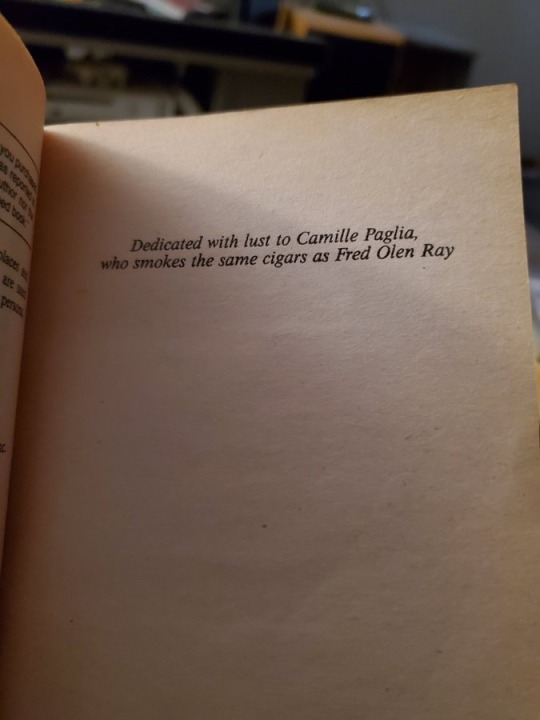#Camille paglia
Text



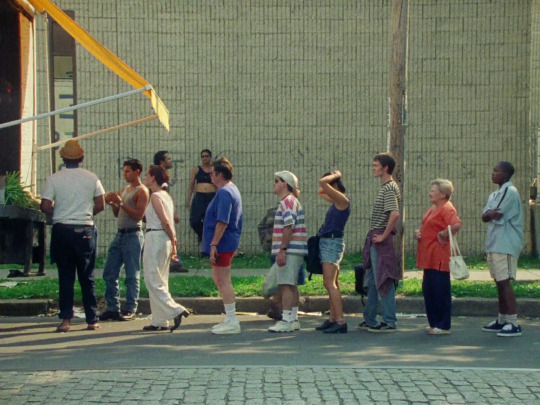

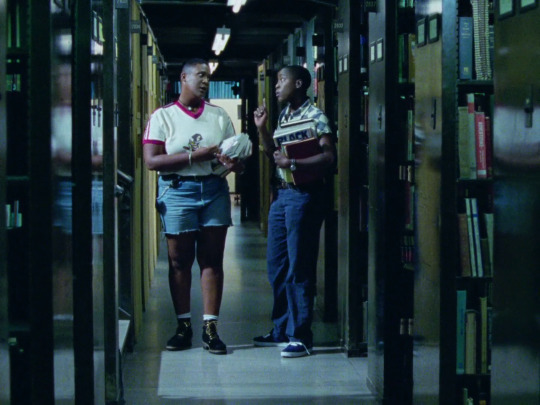
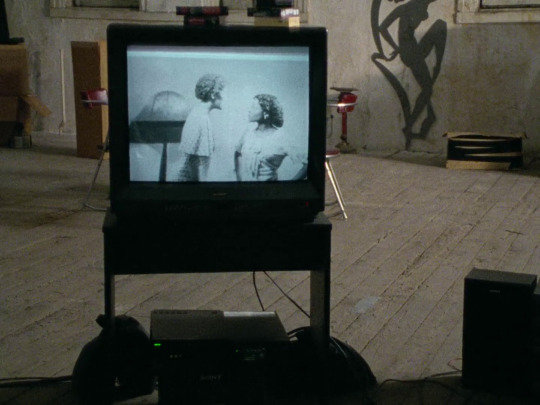

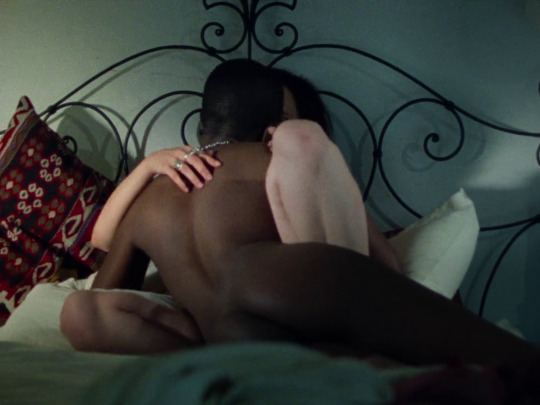


THE WATERMELON WOMAN (1996)
Director: Cheryl Dunye
Cinematography: Michelle Crenshaw
#the watermelon woman#cheryl dunye#guinevere turner#camille paglia#new queer cinema#queer cinema#90s#90s movies#90s aesthetics#cinematography#film screencaps#film screenshots#film frames#movie screencaps#movie screenshots#movie frames#screencaps#screenshots
588 notes
·
View notes
Text
«La Tierra está sembrada de ruinas de imperios que se creían eternos.»
—Camille Paglia
#camille paglia#notas#frases#citas#escritos#caostalgia#textos#pensamientos#en tu orbita#tristeza#overthinker#agosto 2023
266 notes
·
View notes
Text

Released on this day (10 November 1975): Horses, the groundbreaking debut album by shamanistic high priestess of punk poetry (and the woman described by Salvador Dali as “a gothic crow”), Patti Smith. “I have loved Robert Mapplethorpe ever since I saw his bleak, half-transvestite portrait of Patti Smith, posing like an anorexic Frank Sinatra on her first album, Horses,” Camille Paglia wrote of the iconic record cover. “I think it is one of the greatest pictures ever taken of a woman.”
#patti smith#robert mapplethorpe#camille paglia#punk poetess#high priestess of punk#lobotomy room#androgynous#punk#punk rock#horses
168 notes
·
View notes
Text
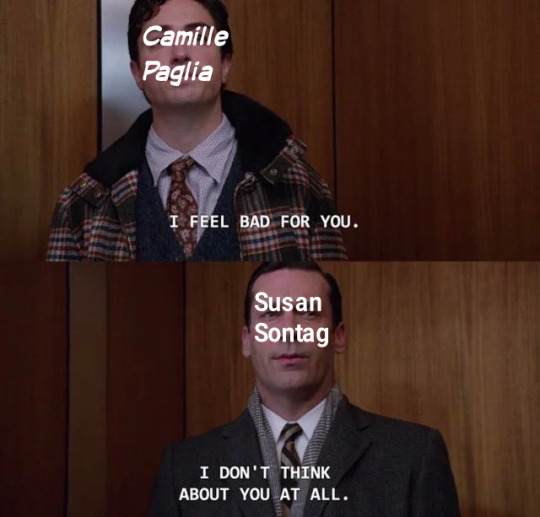
180 notes
·
View notes
Text
Here are some of my favorite graphics from the new Contrapoints video






#the Jack Halberstam quote made me burst out laughing#maybe it’s just because it’s a shiny new video but I genuinely think this is Natalie’s best video essay yet#contrapoints#STRANGEAEONS MENTION!#lefttube#leftist#leftism#breadtube#natalie wynn#twilight#queer theory#lgbt studies#gay and lesbian studies#Jack halberstam#strange aeons#strangeaeons#camille paglia
17 notes
·
View notes
Photo
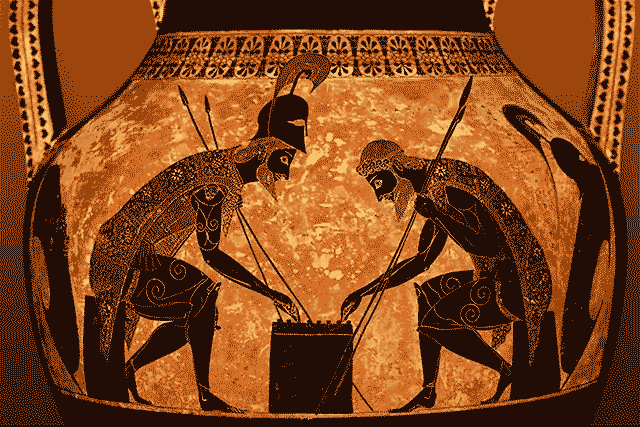
Homeric mind is ingenuity, practical intelligence. There is no Rodin-like deep thinking, no mathematical or philosophical speculation. Odysseus thinks with his hands.
- Camille Paglia
#paglia#camille paglia#quote#classics#greek#odysseus#character#hero#greek hero#trickster#ancient greece#myth#trojan war#the odyssey#the illiad#literature#homer
286 notes
·
View notes
Text

#Ben Appel#Camille Paglia#preachers#self esteem#education#teachers#corruption of education#religion is a mental illness
10 notes
·
View notes
Text


#Madonna#2023#Video Queen#Billboard#Camille Paglia#MTV#michael jackson#beyonce#britney spears#duran duran#jay-z#missy elliott#nirvana#lady gaga#Bay on Say#lol#Madonna40#Queen Of Pop
29 notes
·
View notes
Text
The Picture of Dorian Gray – a case study in Narcissism

The Dying Dandy by Nils Dardel
Conceptual considerations
Carl Jung’s Anima
In Jungian psychology, the anima – a man’s inner-woman and soul – bears the function of relation. To his social surroundings, but also to the material springing from his own unconscious. Men with highly developed animas tend to be the poets, artists and shamans of their respective ages and cultures, however, for the anima to reach her final stage of development and achieve wisdom she has to undergo the trials and turbulences of life and emerge victorious from them.
Melanie Klein’s Object-relations
In Kleinian psychoanalysis, the infant splits objects into categories of “good” and “bad” as some nourish him, for instance the good breast of the mother, whilst others withhold nurture; the bad breast. Splitting is employed as a defense mechanism against terrible anxiety, but it also leads to a lack of internal object consistency and a split within the child’s own psyche. Introjecting the nourishment of the good breast and projecting favorably on it is also a defense mechanism which serves to banish off terrible anxiety. Likewise, the negative projection on the bad mother is a defense mechanism which serves to cast off feelings of bereavement and vulnerability.
If the love and nurture of the good mother is inconsistent or absent, whilst the rage of the bad mother erupts in an uncontrollable and unpredictable manner, the child’s defense mechanism of splitting and projecting may lead to the development of a narcissistic personality as a means to cope with the overwhelming anxiety the relationship to the mother causes.
Psychoanalyzing Dorian Gray
In Man and his symbols Marie-Louise von Franz posits that the first stage of anima development is that of instinctual pleasure, symbolized by Eve in the garden of Eden as she yields into the influence of the snake and satisfies her instinctual calling of biting the forbidden apple. In Sexual Personae Camille Paglia draws parallels between the interaction of Eve and the serpent and the initial interaction of Lord Henry and Dorian Gray. “Lord Henry, the serpent in the garden, infects him with self-consciousness,” (p. 514) Paglia writes. “Every impulse that we strive to strangle broods in the mind, and poisons us,” Lord Henry tells Dorian. “The only way to get rid of a temptation is to yield to it,” he continues.
Lord Henry finds amusement in the manipulation of Dorian, later in the book it is made clear that his goal is to dominate him, much in the same way the bad mother will exercise her influence on the naiveté of her child with a smirk on her face, fully aware of the detriment of her sadism on her child's juvenile psyche.
After Dorian has become self-conscious due to Lord Henry’s flamboyant epigram, he notices the beauty of his own portrait and subordinates himself to it. For he will grow old, but the portrait is ageless, magnificent, flawless, its beauty frozen in time. Here the portrait represents that moment in time the bad mother gazed upon her son, eyes infatuated with narcissistic admiration, such scarce and rare moments are imbued with longing and burned into the depth of his memory. The remainder of the time he is anxiously pre-occupied with recreating and reliving such states as they are the sole pseudo-connection he has experienced with mother.
Meticulous discernment of the subtlest details is a function of the feminine psyche, resulting in awe-inducing perceptual refinement in art and perfect polite mannerism in social interaction, thus the function of the negative feminine, which ostracises and excludes, bullies and berates is essentially an agent of socialisation, setting a cruel standard, callous in regard towards the devastating effect she has on her victims. Lord Henry embodies the negative feminine through his sharp wit, expressive epilogues, callous amorality and glorification of aesthetic beauty over the Christian god of the Victorian age.
Paglia writes “Male homosexuals have an instinct for hierarchy unparalleled in contemporary culture,” precisely because the male homosexual is anima possessed, attuned to the subtlest sign of resentful scorn of the bad mother and adjusts himself appropriately and accordingly so as to cast of the castrating cruelty of her evil eye. He knows mother’s propensity for repulsion and disgust all too well. Male heterosexuals - with their matter-of-fact practical life-approach - on the other hand, will spend an entire life time grappling in bewilderment at the subtle mood fluctuations of women, but to the male homosexual they are no mystery, rather it is the source that has blessed him with his perfect perceptual and social discernment but also cursed him with a cruel castration anxiety.
In the hopes of avoiding evoking the scornful glare of the bad mother, the narcissist meticulously crafts external beauty and arms it with superficial charm, along with all the other surface level niceties that secure the scarce admiration of the good mother which he feels malnourished of. Such people tend to be delightful acquaintances yet horrible friends and that is precisely because no amount of admiration is a true substitute for neither love nor authentic relation.
This, the narcissist knows and is aware of, albeit somewhat unconsciously, which is precisely the reason as to why he will keep his admirers at an arm’s length at all times; so as not to break the enchanting spell of his seduction which would reveal his foul soul, thus the act of veiling his soul by the mist of his charisma and enthralling theatrical personality is a deliberate attempt at self-protection. The soul doesn’t grow foul through hedonistic sin per se, but through absence of the loving gaze of the good mother and the galore of the scornful gaze of the bad mother. Indeed, as the Novel proceeds, Dorian’s portrait –his soul – grows more hideous, to which he anxiously responds by hiding it in fear of being exposed, much like the narcissist seeks to secure mothers scarce admiration by hiding all aspects of self that may evoke scorn.
The scornful gaze of the bad mother has left him denied of love, making him feel ugly on the inside, the absence of the good mother has left him with body dysmorphic identity disturbance, instead of his anima functioning as a bridge to the unconscious - the well where the inspiration for his art and poetry springs from – she severs the connection to it through the fixation on his puzzling mirror-image, leading him to master the art of discernment and external beauty. Transforming himself into the objet d’ art, since he cannot find inspiration for it due to the severing of his anima’s connecting to the unconscious. Lord Henry claims that: “a great poet, a really great poet, is the most unpoetical of all creatures. But inferior poets are absolutely fascinating. The worse their rhymes are, the more picturesque they look.”
Either the anima is retrieving artistic inspiration from the unconscious and fueling man to create great art, or she enters into an unholy alliance with the ego, pre-occupied with seducing others so as to command and manipulate their perception through the construction of the perfect persona, in the hopes of veiling her foulness. There simply aren’t enough hours in a day to have it both ways.
Dorian accuses the painter of his portrait, Basil Hallward, of being a Philistine, to which Henry responds: “Basil, my dear boy, puts everything that is charming in him into his work. The consequence is that he has nothing left for life but his prejudices, his principles, and his common-sense.” (p.47) Basil represents the man, whose anima is still connected to the depths of his inner-realm. On Basil’s love for Dorian, Paglia writes that “ordinary sexual desire is not the issue. Greek idealism is a glorification of the eye, not a glut of the senses,” but the beauty Basil has captured on the portrait is not that of merely superficial externality, it is his soul. Dorian’s antics and charisma never fool him – what may appear as superficial admiration of Dorian’s external beauty on Basil’s end, is in fact an adoration of his juvenile uncorrupted soul as embodied in his youthful countenance. He worships and subordinates himself to Dorian, much in the same way the good mother should subordinate herself towards the narcissistic instinctual needs of a frail and helpless infant.
Perhaps Basil isn’t the delightful socialite that Lord Henry is, after all he is not a slave to his instincts - nor is it his life’s priority to manipulate others perception of him, but he is equipped with a moral compass and common-sense, qualities only those whom have known the good mother possess, which in turn is the foundation for any further developments of the Anima beyond her instinctual stage.
The failure of the mother lies in treating the child as an extension of herself and loving it in a narcissistic manner, meaning not acknowledging the child’s separateness and respecting its autonomy, thus relation to the child always happens from a standpoint of symbiosis.
In this hellish symbiosis, he carries far too great responsibilities for his mother’s reactions and responses and fails to fence himself off from her, he comes to learn that appearance is everything in the eyes of his mother who is stuck in a dualistic pattern of reaction, peddling between scorn and occasional admiration and fails to authentically relate to her child.
However, full-blown narcissism only manifests itself where there is a suppression of the superego, i.e. conscience, which Lord Henry, the amoral aesthete, likens to cowardice.
Basil Hallward, on the other hand, attempts to lecture Dorian Gray in chapter twelve by stating: “One has a right to judge a man by the effect he has over his friends. Yours seem to lose all sense of honour, of goodness of purity. You have filled them with madness for pleasure.”
Reasonable accountability is the good mother’s way of rejecting unethical behavior in her child without rejecting his core being, but the suppression of the superego leads to the narcissist’s failure in distinguishing between reasonable accountability and wrathful scorn. Indeed, any intrusion of conscience into the light of consciousness is experienced as torment, thus he is left with no choice but to suppress that which torments him. The murder of Basil Hallward that ensues at the hands of Dorian Gray is the perfect dramatic analogy of what happens inside the psyche of the narcissist when the torment of conscience intrudes into the light of consciousness and it can merely be dealt with through repression.
In the final scene of the novel, Dorian Gray attempts to stab his hideous portrait, but in an act of pure magic, ends up dying himself, bereaved from his youth and beauty which now ornaments the portrait. What might seem mystical makes perfect sense once one ponders it intuitively: one cannot escape the laws of nature, one’s karmic debt has to be paid back. What has been repressed to the depths of the unconscious will at the moment of death make itself known to the narcissist as he regresses to an infantile stage where all his paranoid fears will make themselves known to him.
#oscar wilde#literature#camille paglia#carl jung#melanie klein#psychoanalysis#narcissistic personality disorder#narcissistic abuse#narcissism#actually narcissistic#psychology#victorian england#english literature
19 notes
·
View notes
Text
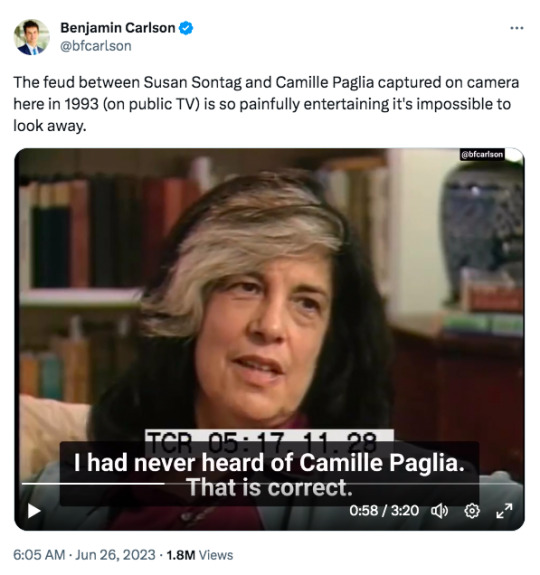
What we really need is a book in the style of Craig Seligman's Sontag and Kael: Opposites Attract Me about Sontag and Paglia.
I thought Deborah Nelson's Tough Enough—which I liked—should have ended with a Paglia chapter. The fact that it didn't, and for what I take to be political reasons, suggests why Paglia has the upper hand in my view: she's not going to be as easily recuperated by the institutions while she's alive. It's hard to imagine Paglia earning the admiration of a consummate professional like Merve Emre. Which is ironic, because Sontag proudly never taught and expressed only bitter contempt for academia while she was alive, while Paglia has faithfully taught for pretty much her whole adult life, if at a wary art-school distance from official academe. (Sontag was good at finding people, even princesses, who would pay her bills; Paglia perhaps not so much, or perhaps, to give her more credit, she regards herself as having a vocation.)
Politically, Sontag was always on the right side of bien-pensance, which I find slightly contemptible; people are allowed to change their minds, but still, if she'd maintained the political views she held in the '60s into the '90s then she would have been on the Michael Parenti side of Yugoslavia (or, conversely, her '90s views in the '60s would have put her on Updike's, Ellison's, and Nabokov's side of Vietnam).
On the other hand, Paglia was and remains too credulous about pop culture, and Sontag's later turn against it—if at times too much in the style of what Kael called the Come Dressed as the Sick Soul of Europe Party—was basically right. Almost her last act on earth was to canonize Bolaño, while Paglia was claiming George Lucas as our greatest living artist.
Paglia's historical scope and emotional register are broader, and for this she'll always have my heart; Sontag couldn't have written a Paterian prose-poem in honor of the bust of Nefertiti or of a Tamara de Lempicka painting. But Sontag probably was more politically sophisticated, and the moral conscience that mortified and tormented her aestheticism created tremendous drama, and for this she will never lose my admiration; Paglia couldn't have issued the prophetic injunctions of Illness as Metaphor or On Photography.
Hilariously but predictably, the moralist Sontag was apparently bad news as a friend, lover, or family member, if gossip and biography are to be believed, while the aesthete Paglia is by all accounts a perfectly kind person in private life.
(When dealing with moralists, you should always bear in mind this line from "The Soul of Man Under Socialism": "One is absolutely sickened, not by the crimes that the wicked have committed, but by the punishments that the good have inflicted." When dealing with aesthetes, you should always bear in mind Basil Hallward's charge against Lord Henry Wotton: "You never say a moral thing, and you never do a wrong thing.")
Paglia lived one side of the binary dividing them to the full, every inch the diva dancing a step of Apollonian precision even in Dionysian frenzy, whereas Sontag allowed—or couldn't have avoided it if she'd tried—Athens and Jerusalem, never mind Apollo and Dionysus, to go to war inside her mind. In that sense, they're not an equal match. I probably love Paglia more as a writer—that is, I love the spectacle she creates on the page—whereas what I love about Sontag, not that she didn't write many unforgettable sentences, is the exemplary tragicomedy of the life of her mind.
I suppose those are some notes toward the book we need.
40 notes
·
View notes
Text
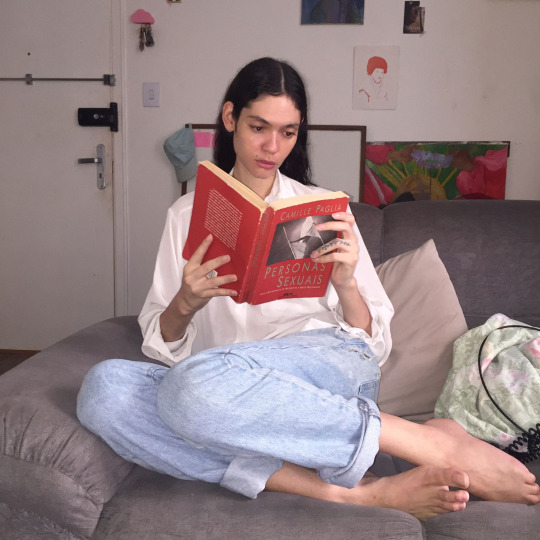
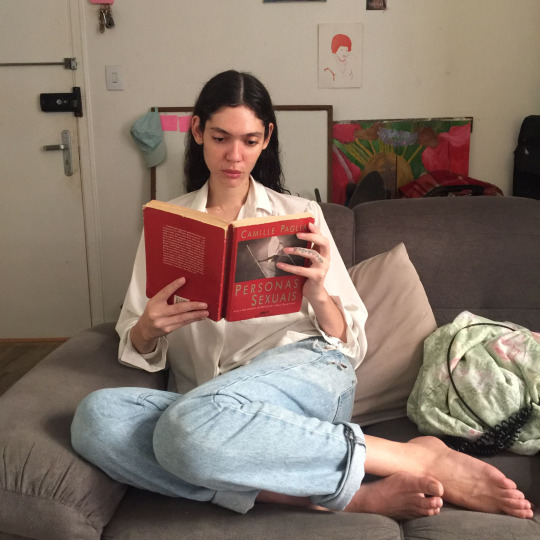
just a tranny reading camille paglia
11 notes
·
View notes
Text

“Madonna’s first video, for her superb, drivingly lascivious disco hit “Burning Up”, did not make much of an impression. The platinum blonde girl kneeling and emoting in the middle of a midnight highway just seemed to be a band member’s floozie. In retrospect, the video, with its rapid, cryptic surrealism, prefigures Madonna’s signature themes and contains moments of eerie erotic poetry.”
/ From “Madonna II: Venus of the Radio Waves” by Camille Paglia, The Independent Sunday Review, 1991 /
“Don't put me off 'cause I'm on fire / And I can't quench my desire …”
/ From the lyrics to “Burning Up” by Madonna /
Released on this day (9 March 1983): double-sided single “Physical Attraction” / “Burning Up” by a hungry young up-and-coming pop starlet called Madonna. Of the two songs, I infinitely prefer the urgent, punky siren call of “Burning Up.” Like all her best tunes, the lyrics cast Madonna as the romantic aggressor / pursuer, wailing sentiments like “You're always closing your door / Well, that only makes me want you more” and – even better! - “Unlike the others, I'd do anything / I'm not the same, I have no shame / I'm on fire!” The haunting video directed by Steve Barron – with cat-on-a-hot-tin-roof Madonna writhing, flailing and thrashing around in a sexual frenzy on an abandoned stretch of road – cemented her provocative bad girl persona. (Fun fact: the guy in the video (Ken Compton) was Madonna’s then-boyfriend). Note that there are multiple mixes of “Burning Up” circulating. The only version you need is the one with biting nasty New Wave guitar. Portrait of Madonna by Gary Heery, 1983.
#madonna#burning up#new wave#post punk#dance music#club music#bad girl#1980s pop#lobotomy room#starlet#sex kitten#punky#gary heery#camille paglia
37 notes
·
View notes
Text
"The Earth is littered with the ruins of empires that believed they were eternal 🌇 !".
_ Camille Paglia.
#Camille Paglia#chicago#Illinois#Town#Empire#Ruins#Life#Walk#Street#Alone#Thoughts#downfall#downfalldestiny
33 notes
·
View notes
Text

Mythology: The Greek Pantheon - Dionysus
Dionysus is energy unbound, mad, callous, destructive, wasteful.
#dionysus#Greek mythology#Greek myth#greek myth aesthetic#greek myth moodboard#greek mythology#Greek mythology moodboard#greek mythology aesthetic#greek gods#moodboard#aesthetic#mythology aesthetic#mythology moodboard#history aesthetic#History moodboard#god of wine#Greek god#camille paglia
12 notes
·
View notes
Text
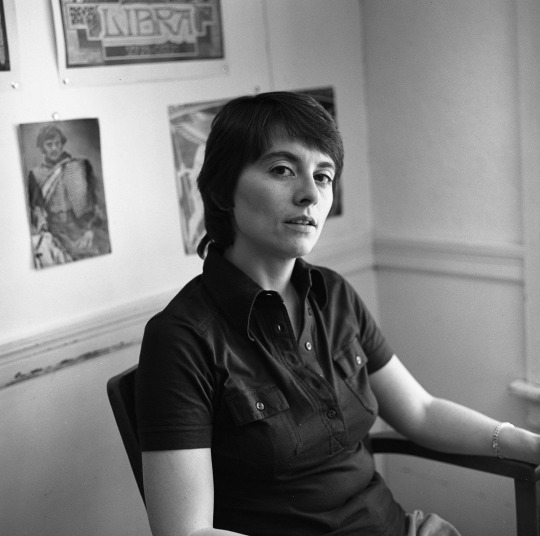
The strength of New Criticism was that it was formulated by poets, men of cultivation and sensibility and - something conveniently forgotten today - broad mastery of the classics and literary history, including the Bible.
Camille Paglia
#paglia#camille paglia#quote#critic#scholar#literature#new criticism#arts#culture#wisdom#civilisation#tradition#custom#classics#bible#literary criticism
46 notes
·
View notes
